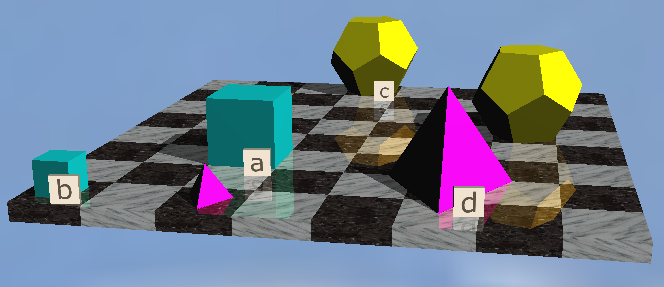LP&L Trees 4 Propositional Samples
1/28/2020
Reading
John Barwise and John Etchemendy, [1999] Language, Proof and Logic
For the Tarski's World part of LP&L, a standard interpretation is used of various sized polyhedra on a chessboard, for example,

Here we are just trying a few samples to see if the software is running correctly.